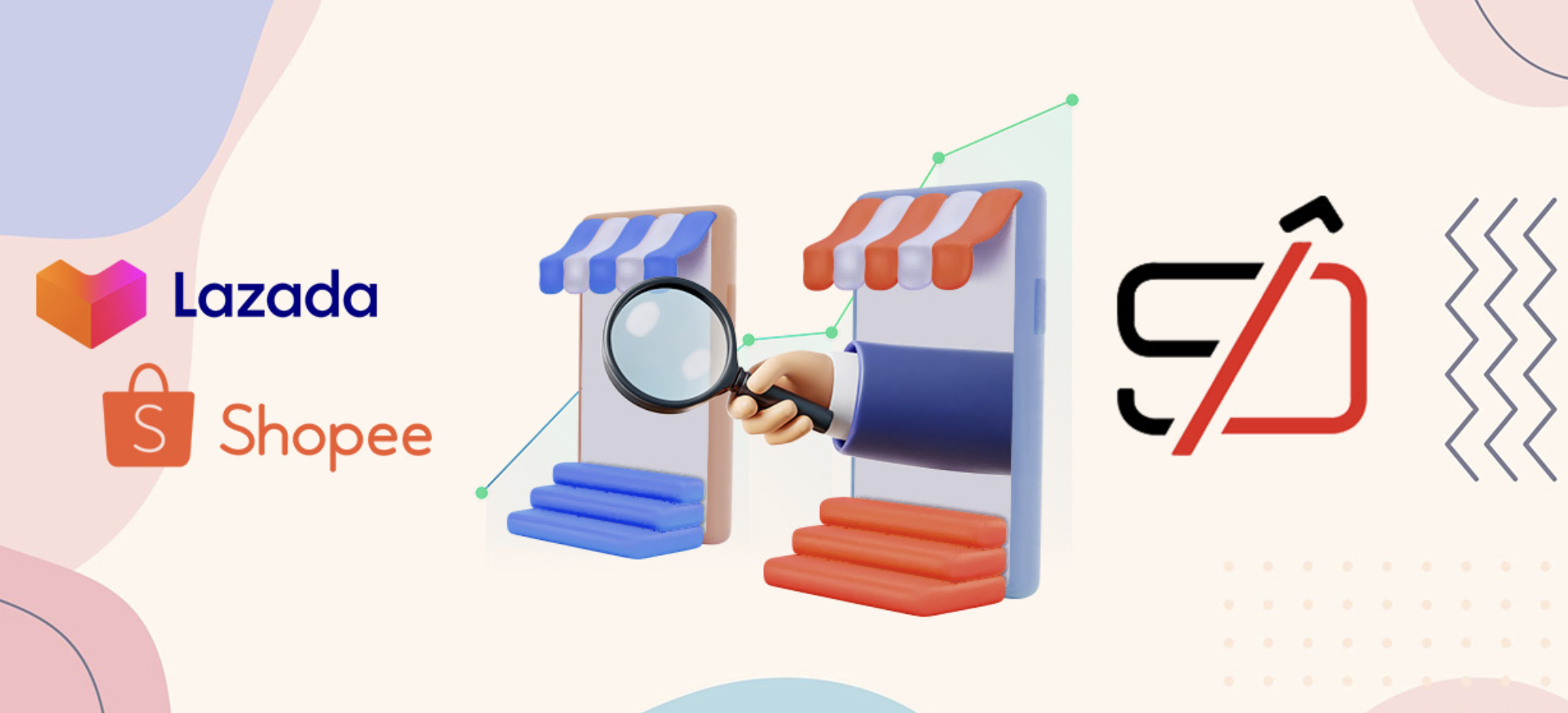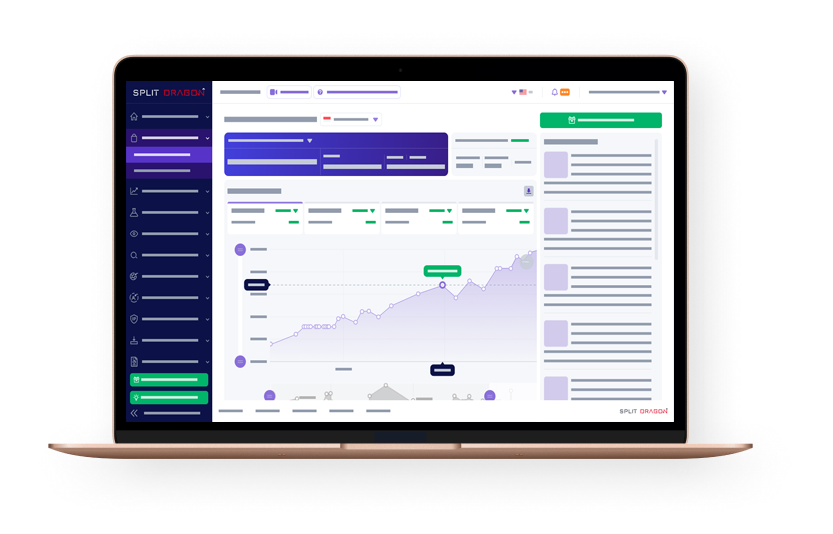Nowadays, the saturation in the ecommerce market requires sellers to always be vigilant with their next move – this applies to e-commerce giants such as Lazada or Shopee as well.
Since online sellers don’t necessarily get to go out and interact with other sellers (and most sellers wouldn’t share their internal information), the data that is gathered through competitor intelligence for eCommerce businesses is mostly done by examining their competitor’s current positioning, pricing, and differentiators in Lazada or Shopee. It helps them understand their competitors and what is happening in the marketplace around them.
What Is Competitor Intelligence?
Competitor intelligence refers to a company’s efforts to obtain and analyze data about its industry, business environment, competitors. This is a gradual and thorough process that helps businesses strategize in order to fill in competitive gaps and climb the ladder in their niche or category.
Marketplace eCommerce requires sellers to always be vigilant with their next move. There is little room for differentiation on a website like Lazada or Shopee. Since online sellers don’t necessarily get to go out and interact with other sellers (and most sellers wouldn’t share their internal information), the data that is gathered through competitor intelligence for eCommerce businesses is mostly done by examining their competitor’s current positioning, pricing, and differentiators in Lazada or Shopee. It helps them understand their competitors and what is happening in the marketplace around them.
3 Common Marketplace Competitor Intelligence Solutions

1. Product competitor monitoring
Product competitor monitoring refers to keeping an eye on a specific product of your competitor and being alerted anytime a change is made. For instance, if you are an online seller with a Gucci handbag as your best-selling product, it would make sense to check into other bestselling Gucci handbags on your marketplace and how they format their product listings and manage their pricing.
By examining their product listing changes, you can have a good idea of how much effort/resources they’re investing in their listings.
Seeing how your competitors are writing their product listing gives you a better look on how to write your product listings as well.
The most common reason for tracking competitors though is to stay-up-to-date on competitor price changes. Most sellers will integrate competitor price update alerts into a workflow for setting their pricing. For instance, if a competitor lowers their price $1 below yours – should you reprice to match them or keep your own pricing?
This usually depends on the competitor but without automation, sellers are forced to manually check daily the different pricing that competitor products have and react accordingly. It can be a very time-consuming process without automated competitor product alerts.
As far as product competitor monitoring is concerned, Split Dragon is the only competitor product monitoring software for businesses that want to track their competitor’s every move. Later in this article, we’ll show you how to track your competitors’ products automatically with Split Dragon.
2. Store competitor monitoring
Another valuable source of competitor intelligence is their store. You can manually navigate to your competitors’ stores and see the below:
- Active vouchers
- Followers
- Seller rating
- Product quantity
- Chat response rate
- Reviews
As with competitor product monitoring, it can be very time consuming to do this manually and most larger sellers and brands use automation to get competitor store change alerts.
What Are Competitor Products And Competitor Stores?
In the most basic terms, a competitor store is another seller within your platform whom you consider to be a competitor, someone who can potentially impact your sales. Competitor products are simply products being sold that are the same or is similar to yours (i.e. Samsung phone/Oppo phone, book/eBook, console/gaming PC)
A lot of you may be wondering why there needs to be a separation between competitor products and competitor stores. Let us shine some bright light on this situation.
Monitoring a competitor on a store level is pretty basic in competitor intelligence but there are also times when a competitor sells some products that you are also selling. But this does not mean that all the products of your competitors are relevant to your business. In this case, it becomes much more beneficial for you to track your competitor products.
There are also times when you see a seller as a competitor store even though your products are not exactly the same but they are most definitely similar. The competition comes in distinguishing which product is better to use.
3. Category or share of shelf intelligence
Your category or share of shelf refers to the percentage of your products that appear in certain search terms or category results. The core concept here is that when a consumer browses an eCommerce platform in search of items to purchase if your product does not appear on the first page of the search or category results, you will most likely not be able to convert a sale out of that customer search and navigation.
Calculating your share of the shelf manually is impossible due to Lazada/Shopee’s personalization. It needs to be done with software as the search rank and category rank can change often. The best practice for this is to check the share of the shelf multiple times per day and plot the average share of the shelf into the report. Split Dragon is able to provide its subscribers with category and share of shelf intelligence as an add-on service too.
Why Should I Track My Competitors?
There are several reasons why successful sellers and brands monitor their competitors. We will touch on the most popular reasons for brands and sellers to use automation when tracking competitors below.
-
To react to price changes
Monitoring the price of your competitors is critical. It enables you to tailor your product prices appropriately and remain competitive. Price is one of the most vital factors when shopping online and if you are in a competitive niche with many sellers selling the same product – price is the single biggest determinant of conversion rate.
Have a look at the image below of a competitive product selling in the Singapore market. As you can see, the most competitive price is winning with sales and reviews. It will be very difficult for anyone to compete with this product listing unless they adapt pricing to match or beat this competitor.
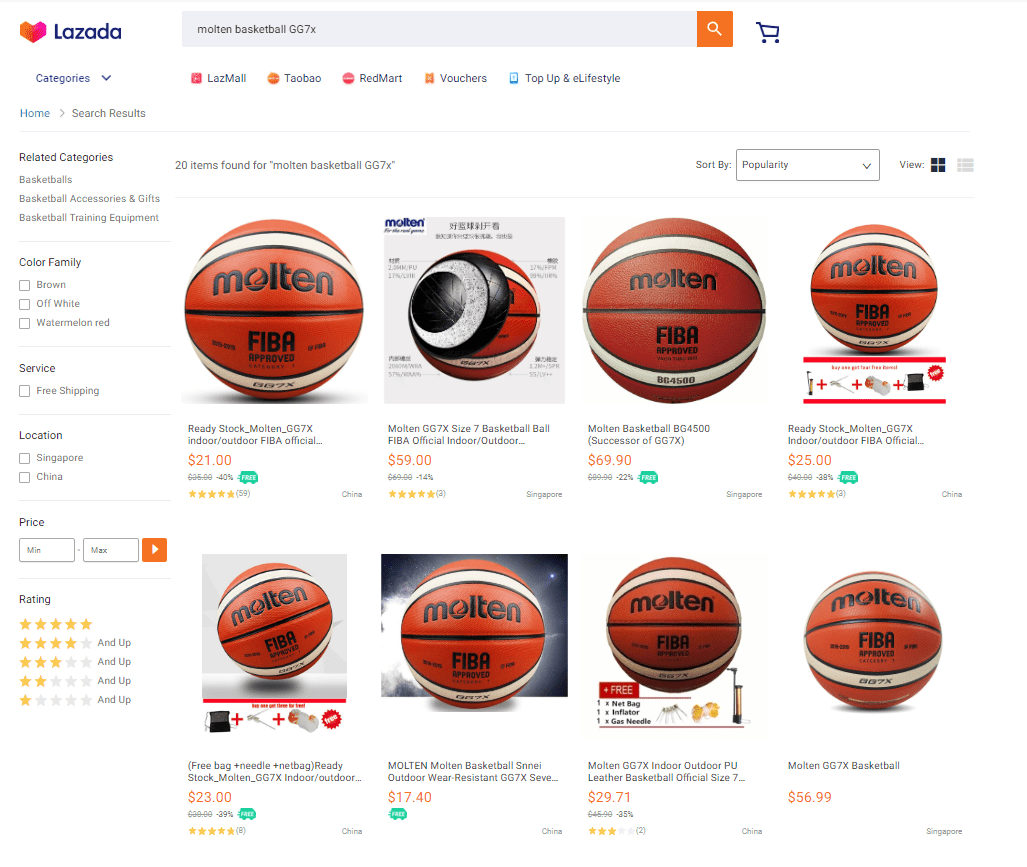
-
To react to vouchers and promotions by competitors
Voucher surprises from your competitors will have an impact on your business.
Anytime they release a new voucher, it is likely to directly affect the cost of the product to consumers. With that being quite clear, having immediate knowledge of when a competitor has created new voucher activities like new promotions and vouchers will help prepare brands and sellers for a counter-strategy.
-
To understand their investments into product listing optimization
As you are gradually assessing the activities of your competitors, you become more mindful and aware of their product listing strategies. You can track their changes to see what they’re testing and imitate the product listing changes that you see to be valuable.
Not only will you be able to avoid your competitors’ mistakes but you can also adapt and enhance some of your competitors’ optimization strategies which could boost your gains in your marketing investments.
-
To understand the growth and strategies used to increase followers
By looking into your competitors’ data, you can leverage their own strategies and use it to increase your followers and enable your brand to grow.
One way to boost your strategy is to take pieces of the tactics that your competitors are doing and combine it with your own work of action.
For instance, Lazada has its own feed where sellers can post content just like what you’d normally do in social media. As you monitor your competitors, you can check out which one of their posts gets the most engagement.
Another example would be tracking your competitors’ follower growth rate. You can do a quick check and see what activities they have undertaken to grow their followers. Tracking competitor followers gives sellers and brands the ability to benchmark their progress against the competition and react with actual data instead of rumors and speculation.
How To Use Split Dragon For Competitor Intelligence + Examples
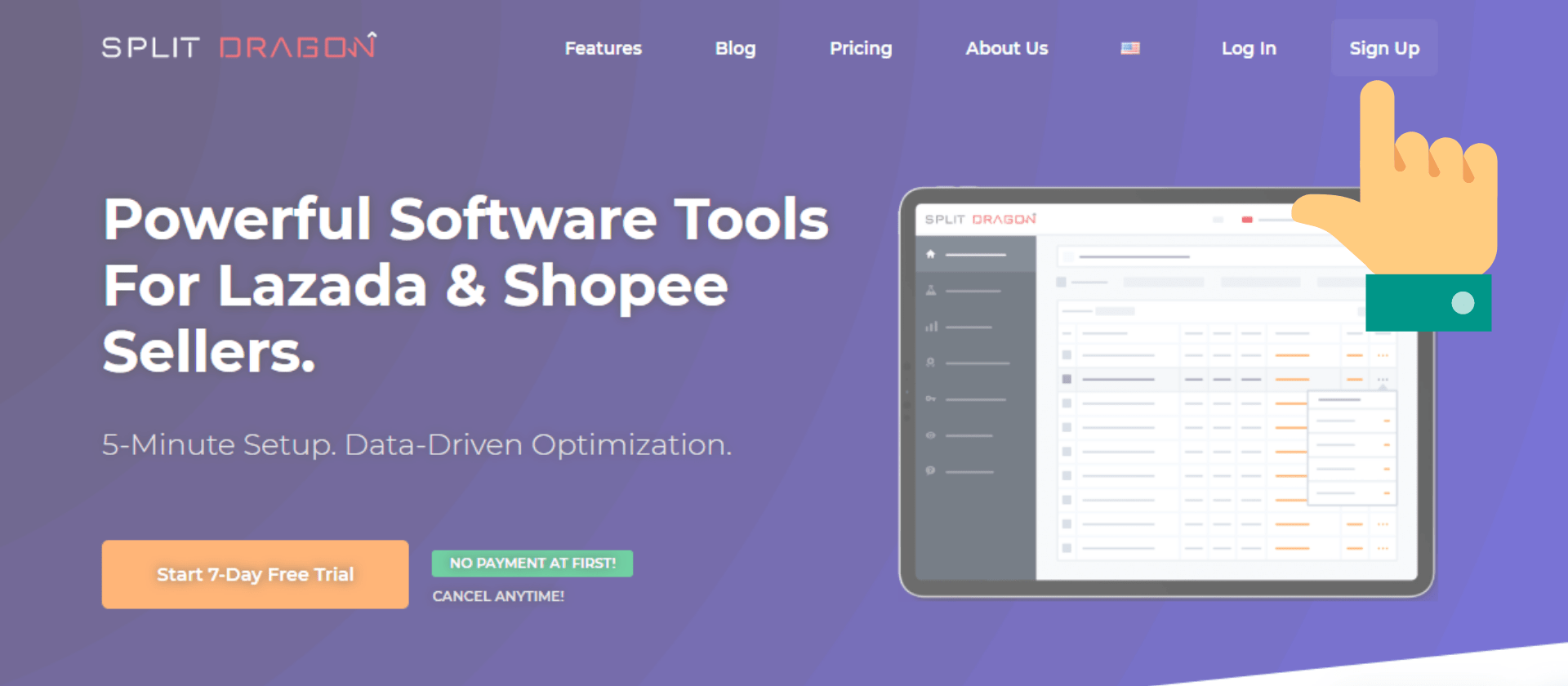
Monitoring your competition can take up a lot of your time. We recommend signing up with Split Dragon for a free trial.
1. Compare And Analyze Your Competitor Products
Split Dragon lets you automate the process of tracking your competitors’ products. Just click Competitor Products in your Split Dragon dashboard.

Copy and paste the URL of the product page that you want to track and then click Start Tracking.


Just give Split Dragon a little while to capture the details of your chosen product to track.
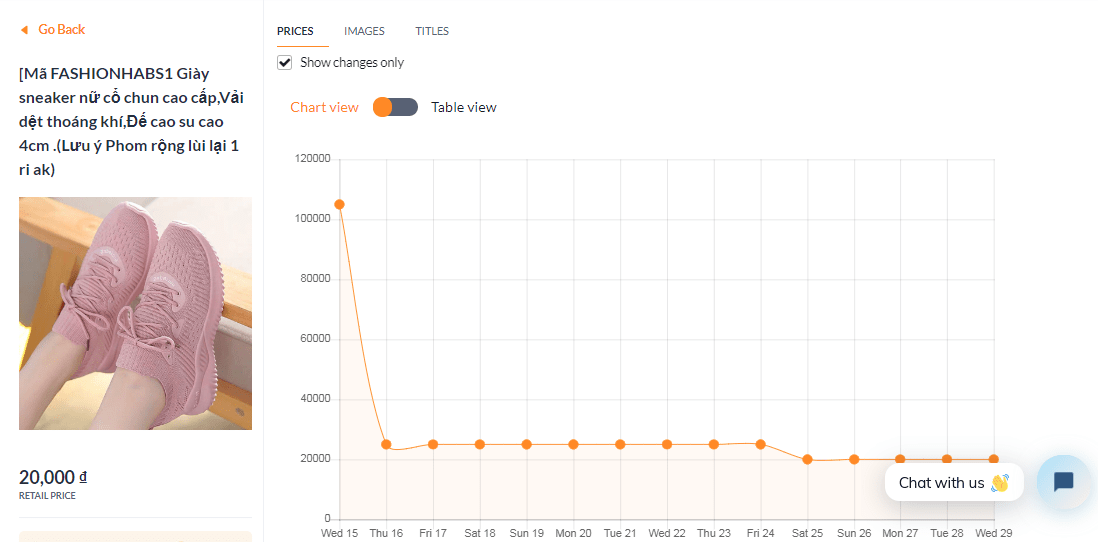
Once the product appears on the list, simply click Competitor Details.

As you can see with this competitor, they recently cut their pricing drastically.
You can gradually watch all the changes being made to the product listing. Go back to it in the next few days and weeks and see the data change. Split Dragon updates the information each time your competitor makes changes to the listing. You’ll also be alerted through email.
2. Compare Your Store To Competitor Stores
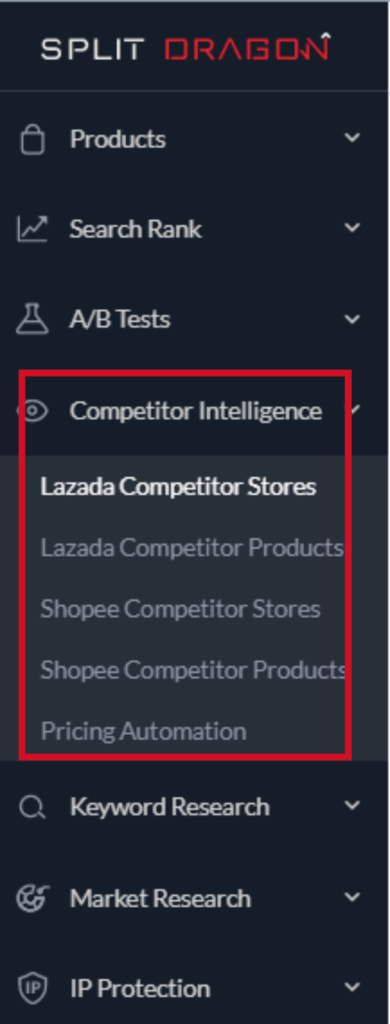
Simply click on Competitor stores and under that, there’s an option to choose Lazada/Shopee Competitor Stores. Choose the marketplace of your choice.

If you haven’t added any competitor store yet, you can do so when you go to the Start Tracking section. Enter the store URL of your competitor and click Start Tracking.
It may take 10 minutes for your competitor to be added to your list. But once it has, simply click Competitor Details.
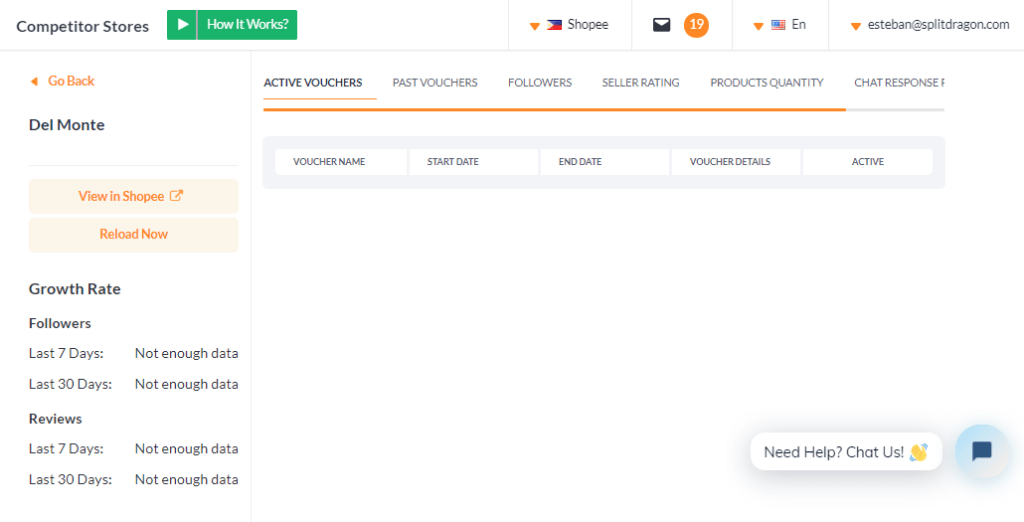
You will then be able to compare your store with your competitor in terms of the following:
- vouchers
- followers
- seller rating
- products quantity
- chat response rate
- reviews
This information is updated on a daily basis. Email alerts are also sent anytime a competitor store launches a new voucher.
3. Receive email alerts/updates
As a Split Dragon subscriber, you will automatically get email alerts each time there is a significant change in your search rank as well as any major changes in the competitor stores and products that you are monitoring.
You are able to automate these competitor intelligence processes. With that, you can react accordingly to your competitors very quickly and not waste any time losing the conversion rate battle with your competition.
You’ll be in a much better position to:
- Reprice your items to match or beat your competitors
- Improve your content based on your competitors’ learnings and investments
- Set a competitive benchmark for reviews and followers
- Set a competitive benchmark for seller rating, chat response rate, shipped on-time rate
- Learn when your competitors’ launch new products
- Create vouchers that counter competitors’ vouchers
4. React Sharply To Competitor Price Changes

Back in the Competitor Intelligence side menu, go to Lazada/Shopee Competitor Products. On this page, you’ll see the name of your competitor products along with the name of the seller, the product’s price, as well as the last time the product was checked and changed by the owner.

When you click on a product, you will be able to see more information. The first tab is the one most relevant to price changes. You will be accompanied by a chart illustrating the movement of price changes including the date and exact price change.
Aside from SEO and CRO, maintaining competitive prices is essential to winning at marketplace selling. And how do you keep your prices competitive? It is by constantly checking the pricing of your competitors and updating your prices as need be.
Want to stay on top of the competition?
Split Dragon offers support with your e-commerce needs using conversion-Focused tools and data-driven solutions. Contact us today to see how we can help you with tailored strategies that will drive your company’s success!



